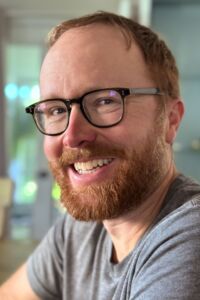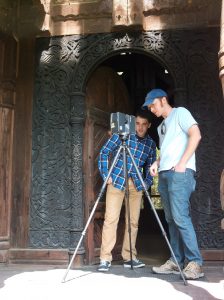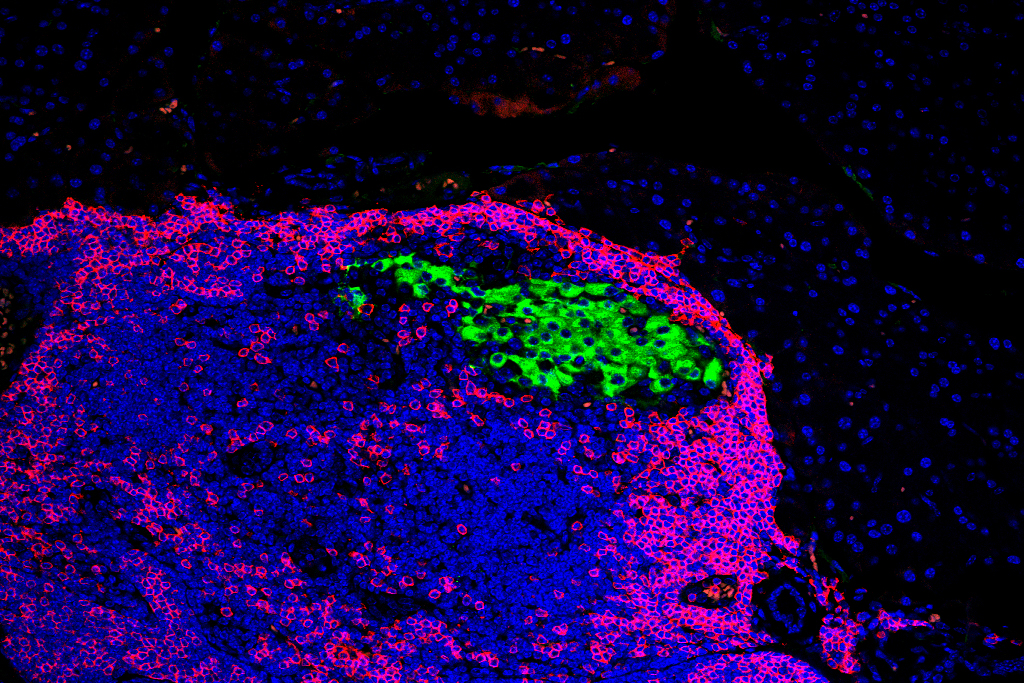Researchers Wield New Technology to Preserve Old Places and Cultural Heritage
Up until a few years ago, a short drive through southwestern Wisconsin into a picturesque valley between the towns of Blue Mounds and Mount Horeb would have taken you to a fantastical representation of life in another time and place. Little Norway, the living museum of a rural Norwegian village, closed in 2012. Its crown jewel “Norway Building”, an architectural marvel featuring intricate matrices of wood in the style of traditional Norwegian stave churches, remained a few years longer before being disassembled in 2015 and returned to Norway, where the structure was originally built.
Visitors to Wisconsin’s scenic southwest will soon be able to explore the church once more, and for a long time to come. Researchers at the Wisconsin Institute for Discovery (WID) have partnered with the Mount Horeb Area Historical Society and Little Norway’s former owners to preserve the historic church digitally and display it in virtual reality.

Ross Tredinnick
Ross Tredinnick, a systems programmer at WID, has long been fascinated with architecture and history and how he might connect his expertise in programming virtual reality displays and software with those interests. So when Tredinnick saw on the local news that a nearby historic building was due to be relocated to a town nearly 4,000 miles away, he sensed an opportunity.
Tredinnick has worked extensively on the vizHOME project, a research endeavor in which WID investigators like Professor of Design Studies Kevin Ponto have sought to improve home health care by understanding how home design affects incorporation of new health care technologies and strategies. The team has visited patients’ homes and used a LiDAR scanner and software tools to create 3D reconstructions of the dwellings. These images can be explored and evaluated by groups of health care professionals in immersive virtual reality displays.
In the summer of 2015, Tredinnick and his collaborators had just finished their first scan of a historical site using the same principles and tools they used for vizHOME. They would later call the digital preservation of Wisconsin-based architect Frank Lloyd Wright’s home “Virtual Taliesin” and showcase it in a series of outreach events.
“Being able to capture interesting spaces like this and share them with others is the main motivation.”
— Ross Tredinnick
The church near Mount Horeb which Tredinnick had heard about on the news seemed like a suitable next target, but unlike Taliesin, the physical object of the scan was slated to disappear. “We had never actually done something where we knew it was going to be permanently leaving,” says Tredinnick. “So that’s kind of a twist on the same application with maybe a more beneficial aspect; the building will be gone from this area, why don’t we try to get a 3D version of it to have around and maybe we could use it at some point.”
Tredinnick, with help from Living Environments Laboratory Associate Director Erica Gill, connected with the former proprietor of Little Norway and owner of the property, Scott Winner. “He [Scott Winner] was a little bit surprised,” says Tredinnick, “but he thought it was a really awesome idea and concept”. With Winner’s permission, Tredinnick and a student – a now-graduated computer engineering major named Sam Solovy – got to work scanning both the interior and exterior of Little Norway’s architectural centerpiece.

Tredinnick and Solovy at the entry to the Norway Building with the LiDAR scanner
Using the same procedures he had refined throughout the vizHOME project, Tredinnick and Solovy completed 16 scans over the course of four hours on an August afternoon outside Mount Horeb. Perched atop a tripod, the scanner rotates 360 degrees, sending laser beams into a space and catching them as they bounce back, reading the beams as spatial data while also capturing images. In all, the scanner gathered 400 million points that Tredinnick and Ponto later stitched together into a very high resolution 3D model of the interior and exterior of the structure.
Throughout Tredinnick’s visit to Mount Horeb, Winner provided lessons about the building’s rich history. “The architecture of the church itself is rare – it’s unique in the sense that it’s a building that can be disassembled and reassembled in different locations,” recalls Tredinnick. “It was first constructed in 1892 in Norway and shipped across the Atlantic; it was on display at the Chicago World’s Fair in 1893.” From there, the building was moved to Lake Geneva, Wisconsin before making its way to Little Norway in Mount Horeb, where generations of locals and visitors experienced its unique charm.
Then in 2015, shortly after Tredinnick completed his scans, the building was disassembled and shipped away. The Norwegian village of Orkdal purchased the structure after a fundraising campaign led by descendants of the building’s original craftsmen who wished to return it to its native land.
With the building gone but its digital counterpart intact, Tredinnick, Ponto, and Gill began to seek ways to share what they had preserved. They found a natural partner in Destinee Udelhoven, the Director of the Mount Horeb Area Historical Society. Udelhoven, they learned, was overseeing construction of a new $1.7 million facility in Mount Horeb built to reveal the history of southwest Dane County: the Driftless Historium, due to open on June 3.
With generous support from the Raymond & Margaret Vicker Charitable Trust, the historium is building a kiosk to house Tredinnick’s rendering of the Norway Building – paired with a voiceover narrated by Scott Winner – in an exhibit that will be called “A Virtual Tour Through Mount Horeb Area History.” The kiosk, constructed by a master carpenter to mirror the style of the church, will feature an Oculus Rift head-mounted display for visitors who want the fully immersive five-minute “walk-though” experience along with a high definition monitor so that passers-by can also engage with the exhibit.
“The 3D kiosk is going to be one of the first things visitors see when they visit our facility,” says Udelhoven, who is enthusiastic about its inclusion in the Driftless Historium. “It was pretty cool to us that you could preserve a historical space in a way that would make it accessible to people but not endanger the historical space itself.”
“It was pretty cool to us that you could preserve a historical space in a way that would make it accessible to people but not endanger the historical space itself.”
— Destinee Udelhoven
The “Virtual Tour” kiosk will be a permanent fixture that at first will showcase the Norway Building alone, but will later include two additional virtual historical experiences from the region to be determined after the museum opens.
“The exhibit will attract visitors interested in history, architecture, oral narratives, and emerging technology,” says Udelhoven. “They will have the opportunity to experience history in an innovative way – exploring hard-to-access or sensitive cultural sites at their own pace and hearing related histories and anecdotes as they navigate the virtual models.”
Both Tredinnick and Udelhoven are looking forward to seeing the exhibit’s impact – and what it might mean for the future of historical preservation efforts. “Depending on how this works out, this could be a motivator to extend it to other places in the state of Wisconsin,” says Tredinnick. “You wouldn’t be able to do this very easily without the sort of technology we’ve been utilizing for vizHOME, so being able to repurpose that for other benefits is a cool thing, too. Being able to capture interesting spaces like this and share them with others is the main motivation, and adding in an aspect that teaches some history or some other concepts along the way is an added bonus.”
Udelhoven agrees: “This could be sort of a pilot program. There’s a possibility in the future of this being available to other small museums,” she says. “It’s exciting to think that it might be one of the prototypes here in Mount Horeb to make this widely available, to help people to make these technological experiences possible for small towns and communities.”
The Driftless Historium, and with it “A Virtual Tour Through Mount Horeb Area History,” opens on Saturday, June 3.
— Nolan Lendved









